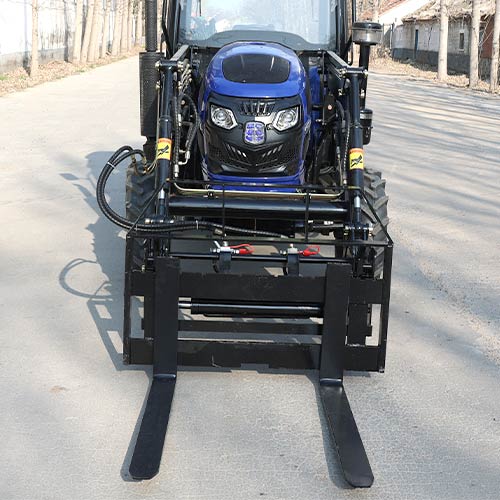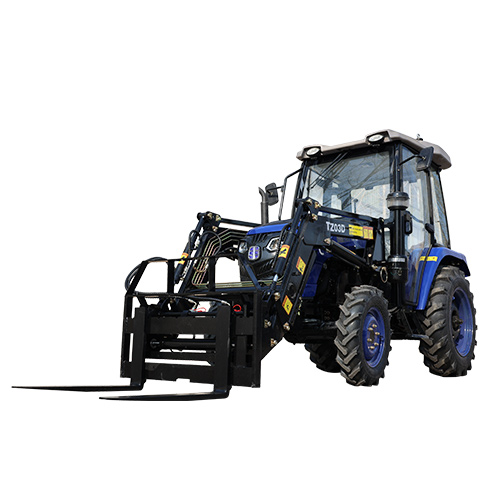Introduction

Pallet forks are a versatile piece of equipment that has found its way into various industries, from warehousing to construction. These attachments transform forklifts into powerful material handlers, capable of moving heavy loads with precision and efficiency. This blog post will explore the different types of pallet forks, their applications across various industries, and how to choose the right one for your needs.
Understanding Pallet Forks
Pallet forks, also known as forklift attachments, are designed to lift and move palletized goods. They come in a variety of shapes and sizes to accommodate different types of loads and environments.
Types of Pallet Forks
- Standard: Suitable for general-purpose lifting of standard pallets.
- Wide: Designed for handling wider loads or multiple pallets at once.
- Long: Ideal for reaching into trailers or containers to retrieve pallets.
- Double: Allows for the simultaneous handling of two separate loads.
Applications Across Industries
Pallet forks are used in a wide range of industries to streamline material handling processes. Here are some examples:
- Warehousing and Logistics: For moving goods in and out of storage areas.
- Manufacturing: To transport raw materials and finished products within a plant.
- Construction: For lifting and moving building materials on site.
- Agriculture: To handle bulk materials like feed or fertilizer.
Comparative Table of Pallet Fork Types
Below is a table comparing different types of pallet forks based on their features and ideal applications:
| Type of Pallet Fork | Features | Ideal Applications |
|---|---|---|
| Standard | Straight and narrow | General material handling, warehouse use |
| Wide | Wider prongs and spacing | Handling oversized or multiple pallets |
| Long | Extended length | Reaching into trailers or high stack areas |
| Double | Two sets of prongs | Simultaneous handling of two loads |
Factors to Consider When Choosing Pallet Forks
When selecting pallet forks for your operations, consider the following factors:
Load Size and Weight: Ensure the forks can accommodate the size and weight of the loads you need to move.Also, make sure to regularly inspect the forks for any signs of wear or damage, as this can compromise their strength and stability. It is important to follow the manufacturer’s guidelines for proper use and maintenance of the forks to ensure safe and efficient operation. If you have any concerns about the forks’ capacity or condition, do not hesitate to contact a qualified professional for assistance.
Environment: Choose forks suitable for the environment in which they’ll be used (e.g., indoor, outdoor, rough terrain).Consider the weight capacity of the forks as well as the length and width needed for the specific tasks at hand. It’s important to select forks that are durable and reliable to ensure safe and efficient operation.
Forklift Compatibility: Verify that the pallet forks are compatible with your existing forklift models.Please refer to the manufacturer’s specifications or consult with a forklift expert to ensure compatibility with your specific forklift models.
Cost: Weigh the cost of the pallet forks against the benefits they provide in terms of efficiency and productivity.Consider the frequency of use and the type of work involved in your operations. If pallet forks are essential for moving heavy materials or loading/unloading goods regularly, then the benefits they offer in terms of time-saving and ease of handling may outweigh the initial cost. Additionally, pallet forks can improve safety by reducing the manual handling of heavy items, which can lead to fewer workplace injuries and increased employee satisfaction.
Benefits of Using Pallet Forks

Incorporating pallet forks into your material handling operations offers several advantages:
- Improved Efficiency: Pallet forks allow for quick and easy movement of heavy loads.
- Reduced Labor: They reduce the need for manual handling, minimizing the risk of injury.
- Space Optimization: By allowing for the stacking of pallets, they help optimize storage space.
- Versatility: With a range of types available, pallet forks can be adapted to various tasks and environments.
Challenges and Solutions in Pallet Fork Usage
While pallet forks offer many benefits, they also present some challenges:
- Selection Confusion: With so many types available, choosing the right one can be confusing.
- Compatibility Issues: Ensuring the forks are compatible with your forklifts can be a challenge.
- Maintenance: Proper maintenance is required to ensure the safe and efficient operation of pallet forks.
Solutions to Common Challenges
To address these challenges:
- Consult with Experts: Work with material handling experts to choose the right pallet forks for your needs.
- Regular Inspections: Conduct regular inspections and maintenance to ensure the safe operation of your pallet forks.
- Training: Provide training for operators to ensure they know how to use the pallet forks safely and effectively.
Conclusion
Pallet forks are a crucial component in the material handling processes of various industries. By understanding the different types, considering the factors when choosing, and being aware of the challenges and solutions, businesses can optimize their operations and improve productivity. The right pallet forks can make a world of difference in moving goods from the warehouse to the construction site and beyond.
FAQ
Q: What are pallet forks used for?
A: Pallet forks are used to lift and move palletized goods, making them a versatile tool for material handling in various industries.
Q: How do I choose the right pallet forks for my business?
A: Consider the size and weight of the loads you need to move, the environment in which you’ll be using the forks, the compatibility with your forklifts, and the cost.
Q: Can pallet forks be used in outdoor environments?
A: Yes, there are pallet forks designed specifically for outdoor use and for use on rough terrain.
Q: Are pallet forks difficult to maintain?
A: Regular maintenance is required to ensure the safe and efficient operation of pallet forks, but with proper care, they are not overly difficult to maintain.
Q: What are the benefits of using pallet forks?
A: Pallet forks offer improved efficiency, reduced labor requirements, space optimization, and versatility, making them a valuable asset in many material handling operations.

